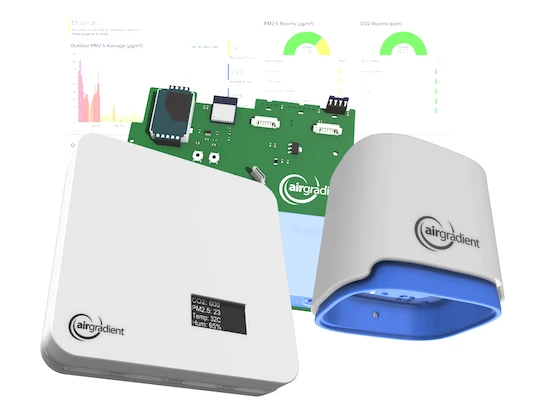Open and Accurate Air Quality Monitors
We design professional, accurate and long-lasting air quality monitors that are open-source and open-hardware so that you have full control on how you want to use the monitor.
Learn Moreby Achim Haug on January 8, 2020
A positive pressure system (PPS) in your house is probably the best solution if you live in a highly polluted area. Standalone air purifiers work but they quickly lead to high CO2 concentrations inside rooms that can significantly impact cognitive performance and well being. How does a positive pressure system work?
You take outside fresh air, filter it through a HEPA filter and then pump the air into your house or room.
What are the advantages of a PPS?
In the end, a PPS is like an air purifier that would take outside air, filter it and push it into the room.
What are the disadvantages of a PPS?
A PPS also has a few disadvantages
How does a PPS perform?
Here at AirGradient we make extensive use of positive pressure systems and measure the results with our own monitoring solution.
Here are our main observations:
Here some CO2 charts from our AirGradient monitoring system:
Closed Bedroom, No PPS, two persons
This is what we see in most bedrooms if your bedroom does not have a ventilation system and you keep the windows closed.

You can see that CO2 levels increase quite substantially throughout the night and hover around 1200ppm.
PPS in one Bedroom, two persons
Now if we run a small positive pressure system in the same bedroom with two people sleeping, we can observe considerably lower CO2 levels below 900ppm.

PPS in one bedroom, one person
The below chart is from a kid’s bedroom with a PPS. As you can see, the CO2 levels are excellent due to a child producing less CO2 and also only one person being in the room.

The PPS system keeps the CO2 levels in the bedroom consistently below 600ppm.
Let’s have a quick look at the PM 2.5 levels in the same room. As you can see, the particles inside the room stay at extremely low levels as the positive pressure system prevents polluted air from entering.

Effect of sealing of Rooms
In the above PM 2.5 chart, you can still detect a very small amount of pollution in a room. If you ensure that your bedroom is additionally sealed, you can actually achieve a flat-line. Below shows another very well sealed bedroom.

The spike at around 5 pm was the result of having a window open. Other than that you can see that the pollution in the room was most of the time Zero.
Conclusion. PPS or Air Purifier or?
We believe that PPS has a better performance than purifiers but needs more effort to install. You also need to make sure that your room is relatively airtight which might pose additional challenges and costs.
In the end, the optimum solution might be to use both. A PPS to create a positive pressure to prevent dirty air coming into the room and an additional air purifier to accelerate air cleaning inside the room.
Curious about upcoming webinars, company updates, and the latest air quality trends? Sign up for our weekly newsletter and get the inside scoop delivered straight to your inbox.
Join our Newsletter
We design professional, accurate and long-lasting air quality monitors that are open-source and open-hardware so that you have full control on how you want to use the monitor.
Learn More